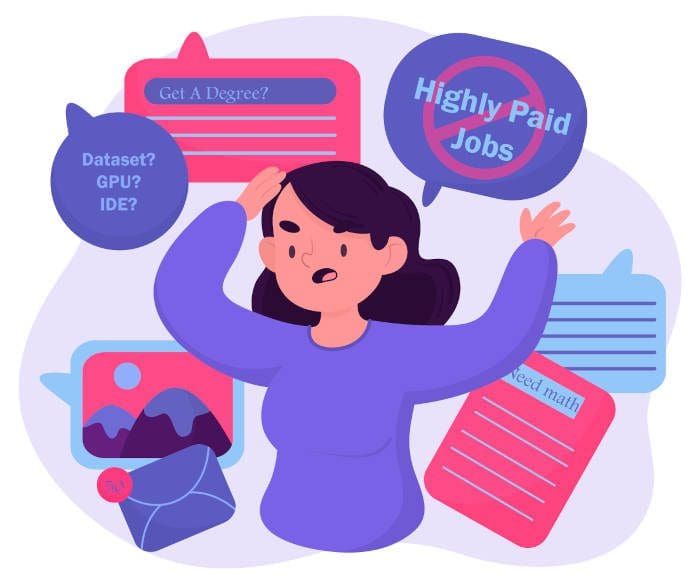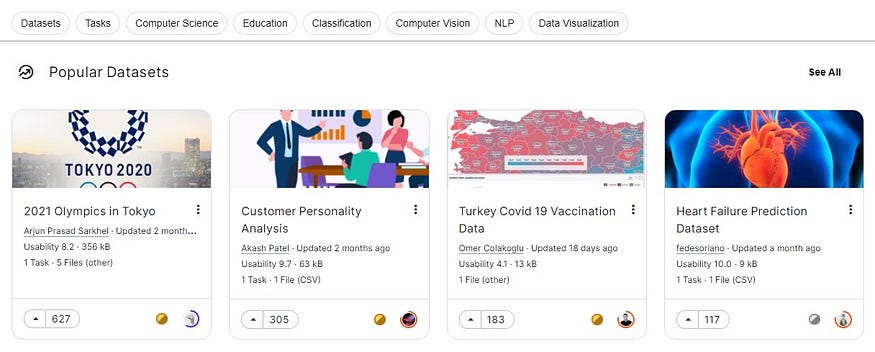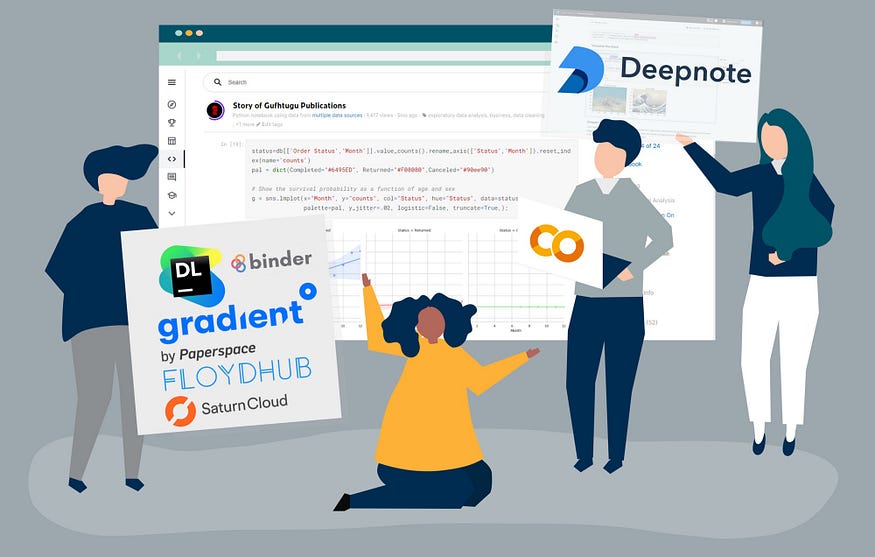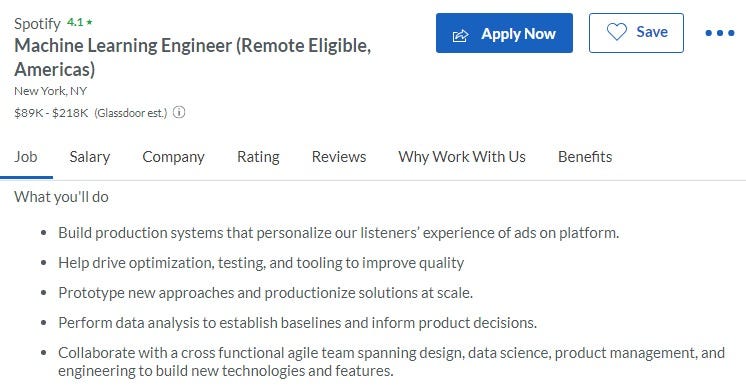The Common Misconceptions About Machine Learning
Beginners in the field can often have many misconceptions about machine learning that sometimes can be a make-it-or-break-it moment for the individual switching careers or starting fresh. This article clearly describes the ground truth realities about learning new ML skills and eventually working professionally as a machine learning engineer.

Image by Author | Elements by freepik.
There is a hype train going on about ML (Machine Learning), and many beginners are getting to be the victims of this hype train as they are getting in for the wrong reasons. Your professor will explain how getting a Ph.D. is necessary if you want to get better or your peers are telling you how to get a better GPU and IDE (Integrated Development Environment). When you started to learn from the online courses, you realized you needed a bigger dataset and proficiency in Python. After learning the required skills when you applied for a job, you realized that you need more than a few courses or certifications to make it. In the end, after getting the job, you realized that it is demanding work, and sometimes these jobs don’t pay well at the initial stages.
This article will help you get through these disappointments and prepare you to face these problems. We will be learning a lot about the real-life problem faced by a beginner getting into the machine learning field.
There is clear empirical evidence that you don’t need lots of math, you don’t need lots of data, and you don’t need lots of expensive computers. — Jeremy Howard (Practical Deep Learning for Coders)
Learn to Code?
Yes, coding is necessary if you are getting into the ML field, especially deep learning. That doesn’t mean you spend your time learning Python, C++, or R first and then start learning ML. The coding part will come naturally when you are learning the basics. You don’t need to remember syntax or model architecture, and you can search them from a simple google search. It's that simple. The world is moving towards no-code machine learning and AutoML. The AutoML is the power tool that will perform all the tasks for you and provide you with a working machine learning model. Sometimes you just need to write two lines of code instead of two hundred lines of code to get similar results.
Do you need Math or Ph.D. in ML?
Yes, you need some math, but for working on research and pushing the boundaries of deep learning. If you are going to train your model and deploy them for production, then you might need to learn MLOps rather than mathematics.
You don’t need math for applied machine learning, but for any research and pushing the boundary, you’ll need to learn advanced statistics. — Jakub Žitný
You also need to learn how model architecture works and various matrix functions. These can be taught in an 8-hour course, and sometimes you don’t even need to learn all the model’s architecture available to solve a problem. I am a huge fan of Jeremy, and in his book Deep Learning for Coders with Fastai and PyTorch, he explains that there is a lot of gatekeeping in the field of deep learning. The academics will ask you to learn advanced calculus, learn all the mathematical models, and eventually get a Ph.D. in a specific field to make it. But you don’t need any of that. I have seen many people who have no degree and have business background are now experts in the fields. So, please focus on fundamentals, learn the entire course, and start growing by working on portfolio projects.
Do you need a huge dataset?
Yes, but in a few cases. The modern deep learning models are now able to produce high accuracy with a limited number of samples. Even getting datasets has now become easier with the introduction of a platform like Kaggle, which have thousands of open-source datasets available to download and use for commercial purpose. We can also find datasets on GitHub, DAGsHub, HuggingFace, Knoema, and Google Dataset Search to train our model and eventually use it for production.

Do you need a degree or certification?
Some jobs do require a degree in machine learning or a certificate in TensorFlow, but if you have a strong portfolio on GitHub and Kaggle, these things become secondary. A lot of developers are transitioning towards machine learning, and they don’t have a specialized degree or certificate to show, but they do have experience working with deep learning models and deploying them to production. If you can somehow prove to the employers that you can do every task in the machine learning life cycle, then you are the perfect candidate. Overall, getting a certificate or degree should not be in your mind if you have a strong machine learning portfolio. To get a strong ML portfolio, read: How to Build Strong Data Science Portfolio as a Beginner — KDnuggets.

Machine Learning with TensorFlow on Google Cloud | Coursera
Do you need expensive computing or IDE?
No, I have an old laptop, and I can train these huge models on cloud GPU and TPU with the help of the Kaggle platform. The world is moving from personal computers to cloud computers. You can get free CPU, GPU, and TPU from Kaggle and Google Colab. There are other platforms that can also help you with data analytics and creating complete projects, such as Deepnote, JetBrains Datalore, and Paperspace. These platforms provide you with a free workspace to build your machine learning product with the addition of collaboration tools. In my day-to-day work, I use Deepnote for working on new research or projects, and if I need a better GPU or TPU, I switch to Kaggle or Colab.
You don’t need to buy expensive IDE or Computing to build your product. Now you have these free cloud tools.

Top 5 Free Cloud IDEs For Data Science 2021 | by Abid Ali Awan | Towards AI
Ground Truth about the Job market
After getting the required skills, you start looking for a job in the market, but soon you realize that companies want more. They want you to know data engineering, data analytics, and MLOps. During the interview stage, they will ask you about the recent projects and your work experience in deploying the model.

Machine learning Jobs | Glassdoor
You will feel quite disappointed even after learning key required skills. This is because most companies are looking for experienced individuals or people with a diverse set of skills. The only way you can improve your chance is to keep learning a new skill and keep participating in machine learning competitions. This will also improve your ML portfolio and eventually make you stand out. It’s hard to get a job if you just started. Keep working on yourself, and eventually, you will get your dream job.
Life of an ML Engineer
As I mentioned above, it requires being good at a variety of skills: obviously, everything needed from a good machine learning engineer, like curiosity, analytical skills, knowledge of algorithms, the ability to understand business requirements, and the need for effective communication. There is more. You need to be good at building software solutions that require experience in machine learning operations. A Day In The Life of A Machine Learning Engineer | by Shanif Dhanani
Other than that, sometimes, you must perform iterative tasks like labeling datasets. You might not get a high-paying job, but you will eventually get a job that requires your full-time and focus. If you are getting into this field just because it offers a high-paying job, then you should start thinking about other options. The only way you will ever succeed in your career is to have die-hard love for AI technologies.
Conclusion
In the end, I will always suggest you keep learning new skills and start participating in Kaggle competitions. For your career, keep looking for new jobs and prepare for your technical interviews. I just want to show you the ground realities of this field. It’s not pretty, and not everyone is making it through. Only with hard work and a learning mindset can you reach a comfortable position where you have a high-paying job.
We have also discussed how machine learning doesn’t require a lot of math, specialized degrees, or a Ph.D. It doesn’t require lots of computing power or a huge dataset. It only requires your time and hard work. You can find amazing courses online and after learning a few skills, start applying those skills to your portfolio projects.
Related:



